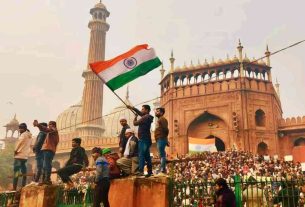In a consumerist society, we often think of how much we are spending first – but the cost to the environment could be far greater
The impact of the fashion industry on the environment is colossal, from the overuse of natural resources to the amount of water used in dyeing materials, the carbon footprint of clothes being shipped globally and the mass production of fast fashion in sweatshops. That’s not to mention the overall impact on nature and the knock-on effect on our health. Taken together, the fashion business is often cited as the second most polluting of all industries. According to the World Bank, fashion is the cause of 20 per cent of water pollution globally. When we buy new outfits, we might be happy to be wearing the latest look but what we rarely think of are the 300,000 tonnes of clothing waste that end up in landfill sites every year. And it’s not just the stuff we wear; it’s also the garments we don’t. Recent studies have shown we only wear 20 per cent of our wardrobe on a regular basis. If consumers took more time to examine all aspects of the life cycle of their clothes, they might think twice about some of their purchases.
My great-grandmother loved fabrics; she enjoyed touching and admiring textiles because of the quality of the material. Her humble beginning in life meant she only had two new pieces of clothing a year, given to her at Eid. That is a stark difference to today’s clothing consumption, which doubled between 2000 and 2014. The environmental impact is set to rise even more with the growth of a culture of consumerism, based on price rather than quality. Research suggests that wearing garments at least 30 times makes them more environmentally friendly but with fast fashion brands releasing between 14 and 24 collections a year, the desire to keep up with the latest trends can prove irresistible. It is more important than ever for clothing companies to be transparent about their supply chain and the efforts they are making to implement more sustainable practices.
In the arid region where I live, one of the high-value resources is water, critical to many aspects of our existence here. Only about 1 per cent of the Earth’s surface fresh water is contained in rivers, lakes and the atmosphere, according to the US Geologic Survey. The majority of fresh water is frozen in glaciers and ice caps. To witness some of the countries that boast such natural resources as rivers and lakes, but are heavily involved in garment production, then discharge toxic dyes used in the manufacturing of our clothing into those rivers is shocking and unacceptable. Approximately 8,000 synthetic materials are used to process textiles, many of which then end up polluting our planet and making rivers toxic and unusable. For example, the move from plant-derived indigo used to dye jeans to a chemically derived synthetic indigo has caused toxic material to run off into our water reserves. A single pair of jeans takes approximately 900 gallons of water to create, which is not just a waste of water but could lead to dangerous levels of chemicals escaping into our environment. According to Cotton Inc, 85 per cent of the water used in the textile dyeing process pollutes nearby water sources while 1.3 trillion gallons of water are used to dye fabric annually – enough to fill two million Olympic-sized swimming pools.
What first got me interested in the sustainability of the fashion industry was the misconception I had regarding cotton. The soft, natural fibre, whose appeal lies in its breathable qualities, is actually a water-intensive resource that has been responsible for the drying-up of the Aral Sea basin between Kazakhstan and Uzbekistan.
This led me to wonder: is it possible to knit together environmental, social and economic benefits to create sustainably produced clothing that we are proud and happy to wear with our consciences intact? Would you be more inclined to purchase a piece of clothing if you could see exactly what went into its production?
We can all do our bit, including by not being slaves to fast fashion and commissioning tailors in our communities to stitch national outfits. Not only will we be protecting and safeguarding our national heritage, we will also be putting the brakes on fast fashion while enjoying beautiful fabrics and the craftsmanship of a handmade product.
However, it is not all doom and gloom. Innovation in the textile industry includes creating fabrics with fibres from unlikely places. Among the recent inventions are a material that looks like leather but is made from pineapples, and fibres that respond to body temperature, made from stinging nettles. One innovative company called DyeCoo has been using carbon dioxide to treat fibres, cutting back on energy wastage and eliminating the use of water from its manufacturing process.
Additionally, in an attempt to combat the global epidemic of plastic pollution, some organisations are using recycled plastic bottles to create yarn that can be used to make clothing. While this does address the issue of reducing plastics, I believe it creates more challenges because, when it reaches the end of its life, the used product is much harder to collect and recycle. Nevertheless, I see many enterprises in this sector that could help address the sustainability challenges that we face.
In the meantime, the next time you are “dyeing” to own a new outfit, consider the cost to the environment. Putting the brakes on fast fashion and opting for ethical clothing made from more sustainable materials will cost us all less in the long run.
Sheikha Shamma bint Sultan bin Khalifa Al Nahyan is Chief Executive Officer of Alliances for Global Sustainability





